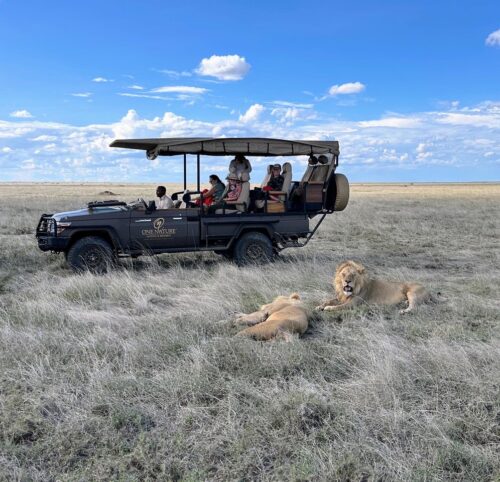By Lori Souder
with photos by Suzette Bross Bulley
Editor’s Note
In 2009, an encounter with wild elephants during a Kenyan safari sparked Lori Souder’s passion & awareness for the urgent need to protect Africa’s elephants from extinction. Fueled by this impactful experience and the remarkable individuals she met, who were tirelessly committed to preserving this magnificent species, Souder immersed herself in elephant conservation. As a result she began to curate authentic, bespoke safaris for friends and family, providing them with firsthand experiences to witness the on-the-ground efforts dedicated to saving the world’s largest land mammal.
In 2017, she solidified her dedication by founding “Here Today, Africa Tomorrow (HTAT Journeys),” a travel company committed to supporting conservation. Specializing in bespoke safaris to Africa, HTAT Journeys not only curates authentic experiences, but also advocates for local communities, wildlife, and ecosystems. Through her decade-long dedication, Souder has built a solid foundation of support, significantly contributing to the cause of African Elephant Conservation.
Recently, in November 2023, Souder led her latest group adventure to the East African country of Tanzania. This week, Classic Chicago Magazine caught up with Souder to delve into the details of that journey.
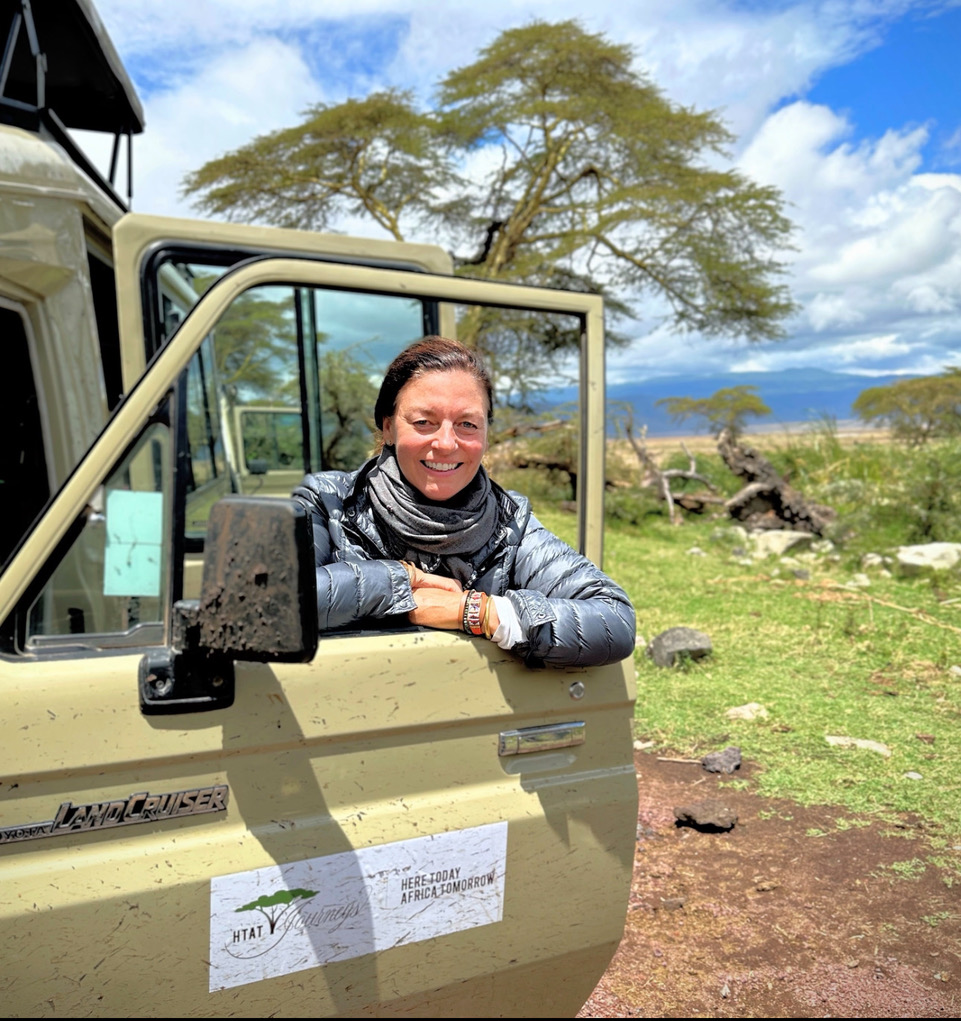
Lori Souder, Founder of Here Today, Africa Tomorrow | HTAT Journeys

Q&A
Tell us where you visited on this important safari & why you chose to take your group to those places?
The East African Country of Tanzania.
I chose Tanzania because it is a world-renowned safari destination that offers a combination of natural wonders, rich cultural diversity, and abundant wildlife. We visited five unique areas of the country, including a day trip to Lake Manyara National Park, The Ngorongoro Crater, Rubondo Island on Lake Victoria, Serengeti National Park, and Zanzibar.
———————–
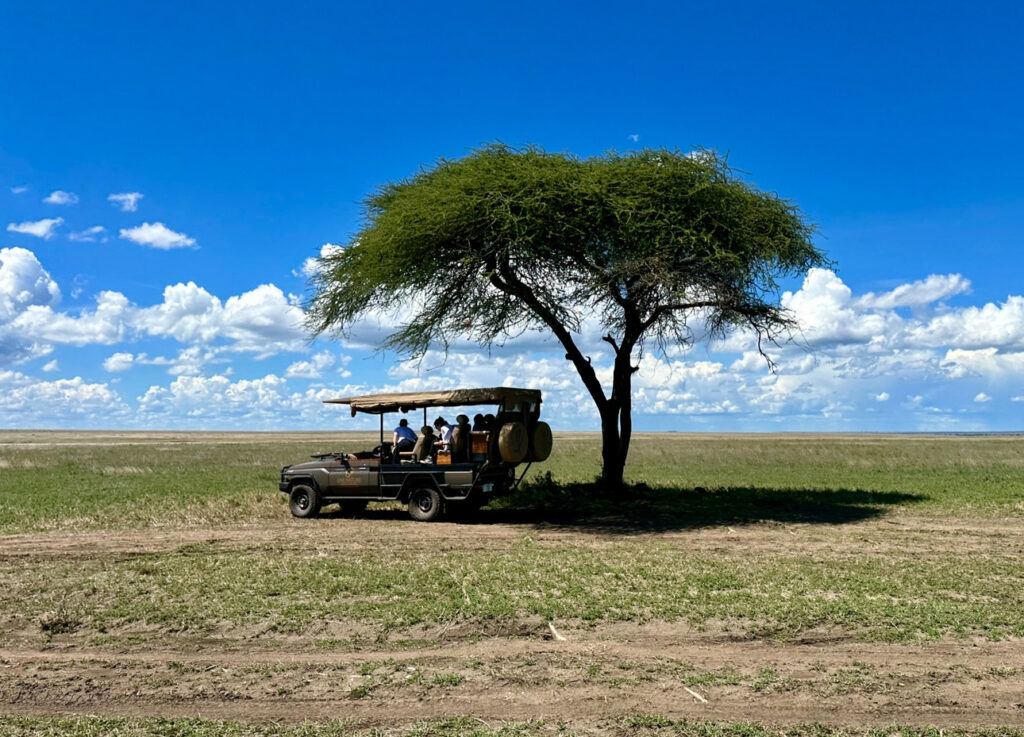
Enjoying the shade of an Acacia Tree, Serengeti National Park
Lake Manyara:
Lake Manyara National Park, nestled at the foot of the Great Rift Valley’s western escarpment in Northern Tanzania, was of special interest, as it was here that my dear friend, Dr. Iain Douglas-Hamilton, embarked on his groundbreaking study of African elephant behavior. Despite the rain on the day of our visit, the park was full of wildlife, starting with a majestic bull elephant who was navigating the same road through the park as us. Though compact, Lake Manyara National Park consists of an alkaline “soda” lake, surrounded by diverse landscapes ranging from open grasslands to dense groundwater forests. It is home to an array of wildlife, including tree-climbing lions, playful baboon troops, striking yellow-billed hornbills, flamingos and, of course, the magnificent elephants, which it was established to protect.
———————————
The Ngorongoro Crater:
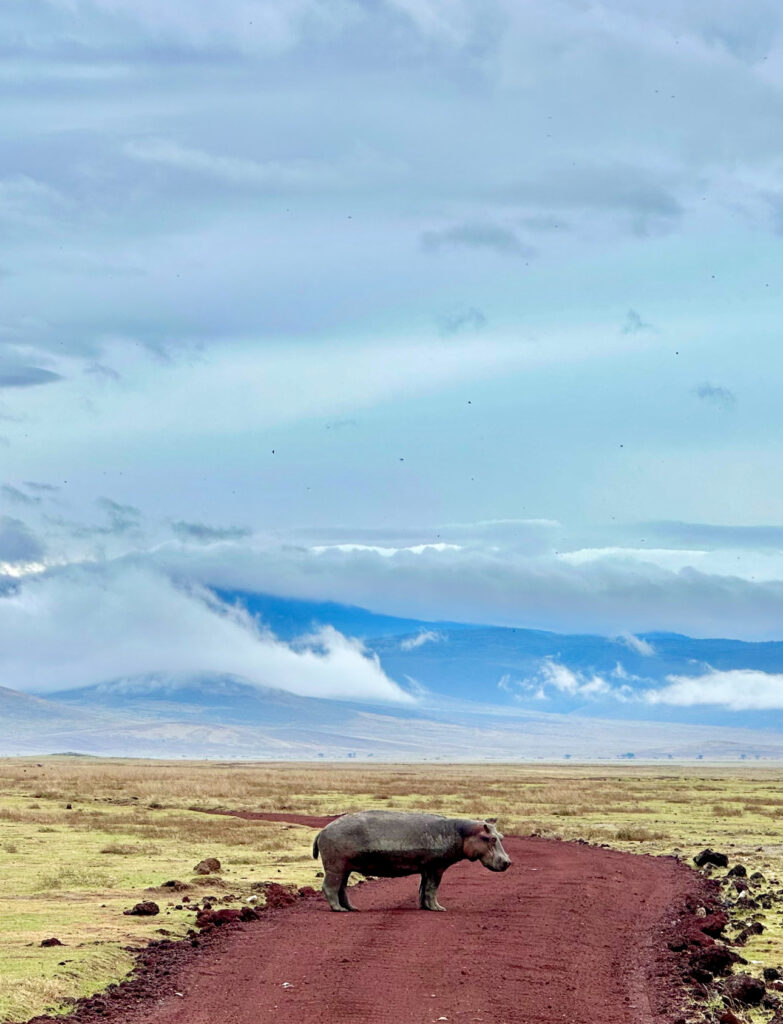
Hippo, Ngorongoro Crater
Every first-time visitor to Tanzania should embark on the journey to The Ngorongoro Crater. Designated a UNESCO World Heritage site, this extraordinary place is a surreal marvel teeming with wildlife. Believed to have formed over 2.5 million years ago from the collapse of an active volcano’s cone, the crater we see today is surrounded by towering, vegetation-covered walls reaching heights of up to 600 meters (1968.5 feet). Over the millennia, it has evolved into a self-contained ecosystem boasting a distinct climate and various habitats.
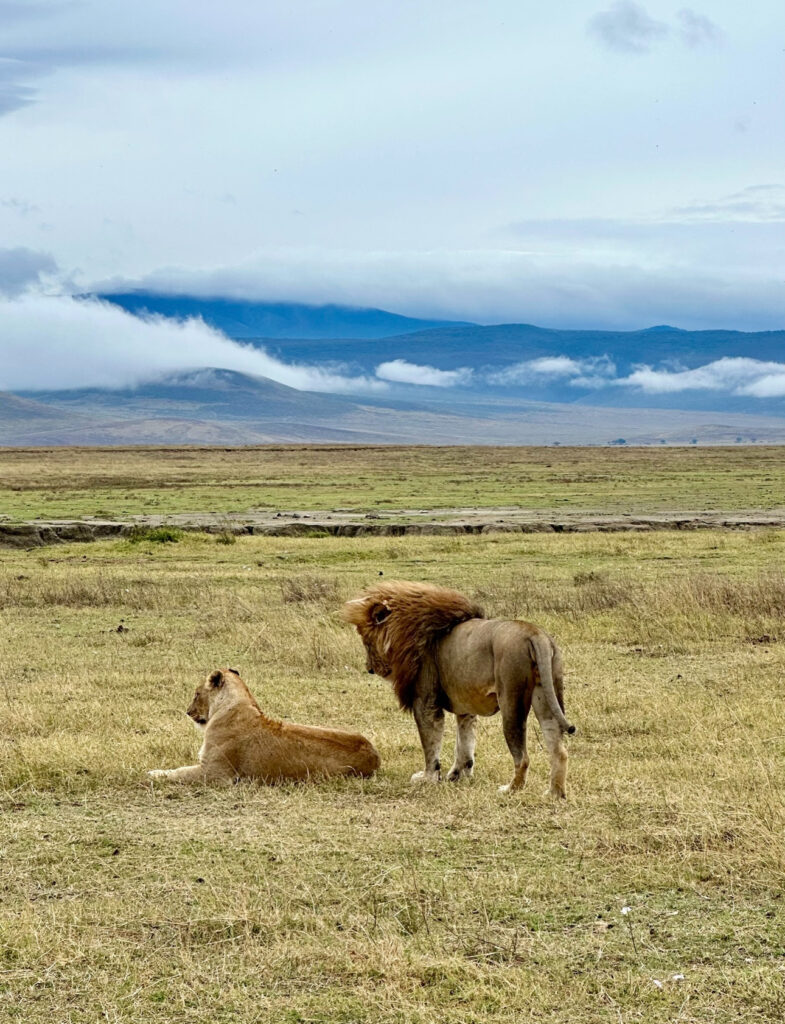
Lioness & Lion, Ngorongoro Crater
The crater floor comprises four distinct habitats: a grassland savannah inhabited by thousands of zebra, wildebeests, various antelope species, and buffalo. A large alkaline lake, surrounded by swamps, hosts thriving pods of hippos and vibrant pink flamingos. A wooded forest provides ideal shelter for a small population of black rhinoceros and a few elephants. Predators such as lions, hyenas, and cheetah freely roam the crater floor, displaying impressive plumpness—perhaps owing to the abundance of food. Visitors can witness the “Big Five” – lions, elephants, buffaloes, leopards, and rhinoceros. However, giraffes and crocodiles are absent, as their preferred foods and habitats are not found within the crater.

Safari through the woodlands of the Ngorongoro Crater
———————————
Rubondo Island:
Rubondo Island, situated on Lake Victoria, is a petite island boasting serene shores and unspoiled equatorial jungles, offering an off-the-beaten-path adventure for those seeking a bonafide African experience. Days here can be filled with sports fishing, bird-watching, and wildlife safaris. An interesting tidbit about Lake Victoria is that it ranks as the second-largest freshwater lake globally, surpassed only by North America’s Lake Superior. Our group, hailing from Chicago and, residing on another Great Lake – Lake Michigan, made our visit to Lake Victoria and Rubondo Island particularly meaningful.
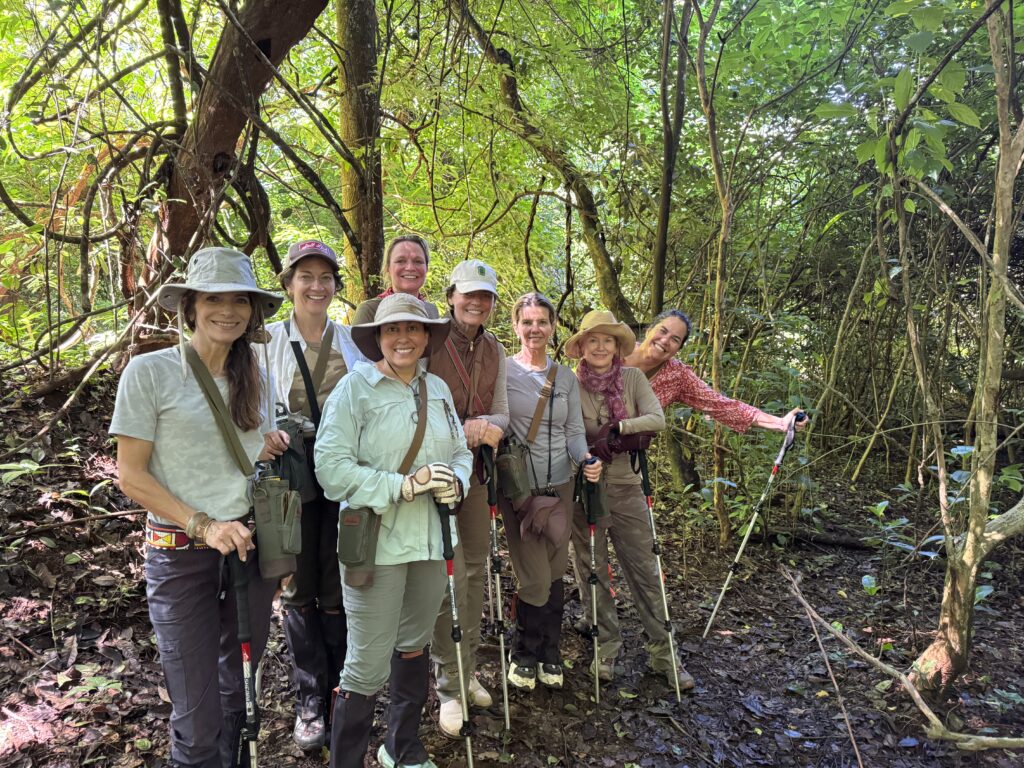
Yet, my own fascination with Rubondo Island extended beyond its location on Lake Victoria, as the island is known for its ambitious conservation project during the 1960s, that focused on the rewilding of captive zoo chimpanzees. Because conservation is at the heart of the safaris I plan, I took my recent group to Rubondo Island with the hopes of witnessing these remarkable creatures up close in their natural habitat. The plan was to participate in the chimpanzee habituation process—an exclusive chance to trek alongside a team of local researcher/guides as they acclimate the chimps to human presence. Regrettably, Mother Nature had different plans, and our quest to find the chimpanzees proved unsuccessful. Nevertheless, this served as a poignant reminder that this is nature; and, not every wildlife sighting, on safari, can be guaranteed.
———————————
Serengeti National Park:
No adventure to Tanzania would be complete without witnessing the magic of Serengeti National Park. An African ICON, The Serengeti itself is the size of Brussels and sprawls across the expansive plains of Tanzania. Famed for the Great Wildebeest Migration, a natural phenomenon that sees millions of wildebeest and zebras traversing the plains in search of fresh grass for grazing, the Serengeti offers a front-row seat to nature’s grandest show.
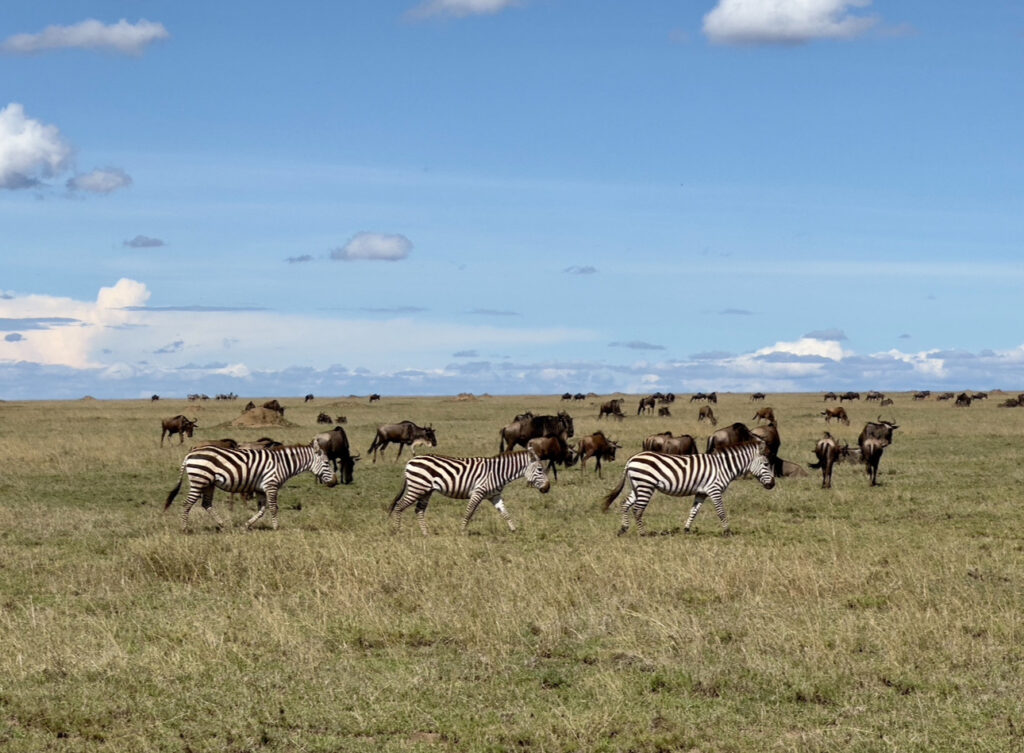
Migrating Zebra & Wildebeest, Serengeti National Park

Lioness in a tree, Serengeti National Park
While we did spot a few migrating wildebeest herds in the distance, the most unforgettable moments were the up-close and personal encounters. Witnessing large herds of elephant families, tree-climbing lions, and a leopard with its baby zebra kill hoisted high in a tree, along with a black mamba, one of Africa’s deadliest snakes, slithering up the same tree trunk, left a lasting impression. Another remarkable safari experience involved observing two lion brothers and a cackle of over 30 hyenas chasing a lone male lion out of their territory. However, nothing beats the joy of catching a glimpse of wild babies – from the heartwarming sight of baby jackal pups welcoming their mama back to the den to the adorable scene of a baby cheetah playfully engaging with its mom. Beyond its incredible wildlife, the Serengeti’s cultural significance, deeply rooted in the heritage of the Maasai people, adds a profound and enriching dimension to the safari experience, too.
However, no trip to the Serengeti would be complete without ending the day with a G&T (or a glass of Champagne) in hand and an epic African sunset!
———————————
Zanzibar:
A wonderful way to end a safari in East Africa is to visit the beaches of the Indian Ocean. Often times, in my bespoke safari itineraries, I will include a ‘beach safari add-on’. Being in Tanzania, it was only natural to add Zanzibar, an archipelago off the coast of Tanzania. For many travelers visiting East Africa, Zanzibar is a sought-after destination for its stunning white-sand beaches, turquoise waters, and vibrant coral reefs. The cultural richness of the UNESCO-listed Stone Town, influenced by Arab, Persian, Indian, and European elements, adds a historical and architectural charm to the region. Spice tours reveal Zanzibar’s nickname, the “Spice Island,” showcasing the cultivation of cloves, nutmeg, vanilla and cinnamon. Divers and snorkelers are drawn to the diverse marine life surrounding the islands. Warm hospitality, and traditional dhow cruises contribute to the appeal of this year-round tropical paradise.
For our group, however, we endured November’s unexpected “El Nino” and our days on the island were mixed with rosé, sunshine, sand in our toes and a few tropical downpours… but, again, it’s nature and one should be prepared for anything, even in paradise!

Elephants on the road in Lake Manyara National Park
I know that African elephant conservation lies at the heart of your work. How did you get started advocating for them and what paths has that taken?
In 2009, my husband Ted posed a life-changing question: “If you could go anywhere in the world, where would it be?” Without hesitation, I exclaimed, “AFRICA!” Soon after, Ted surprised me with a two-week safari to Kenya, sparking a profound love for Africa and embarking on a life-altering journey.

Face to Face with an Elephant in the Serengeti
During the flight from London to Nairobi, my excitement peaked. While perusing inflight movie options, I stumbled upon “The Secret Life of Elephants,” a documentary focused on the lives of elephants in Kenya’s Samburu National Reserve. This heartwarming film introduced me to vital work of Save the Elephants and the Douglas-Hamilton family, who have dedicated over 50 years of commitment to African Elephant science and conservation.
Our safari began at Lewa Conservancy, where I encountered my first wild African elephant, and serendipitously, Ted and I met Oria Douglas-Hamilton. Oria is the wife of renowned scientist Dr. Iain Douglas-Hamilton, who was a key figure in “The Secret Lives of Elephants.” Meeting Oria became more than a just a chance meeting on safari; it forged a profound connection to Africa and its elephants sparking a journey that continues to shape and inspire my life– fueling a passion not only to save Africa’s elephants but also to establish my safari travel business, Here Today, Africa Tomorrow (HTAT Journeys).
How has this emphasis changed in the countries you visit?
Since 2016, “Here Today, Africa Tomorrow” (HTAT Journeys) has designed bespoke safaris for clients to unforgettable places across a range of awe-inspiring African destinations, including Kenya, Tanzania, Uganda, Rwanda, Zambia, Zimbabwe, Botswana and even Gabon. Each location has offered its own unique blend of natural beauty and cultural richness, providing once-in-a-lifetime experiences .
In April of 2023, my husband Ted led an HTAT Journeys expedition to Gabon on the Western Coast of Africa. This trip was a foray into a land less traveled, a place where wildness reigns supreme with minimal infrastructure, offering an authentic glimpse into the unique animals of this country like sea-salt loving forest elephants, surfing hippos and lowland Gorillas.

Dhow on the Indian Ocean off of the Zanzibar Coast
As my safari business Here Today Africa Tomorrow (HTAT Journeys) continues to evolve, I have exciting new adventures on the horizon. This year, I am thrilled to lead a group of women to Namibia, where we will explore the enigmatic Skeleton Coast and hope to witness the incredible desert elephants that have adapted to this harsh, yet stunning environment.
The African continent is vast! It is over three times larger than the United States, which is a constant reminder of the endless opportunities for exploration and discovery of this great continent!
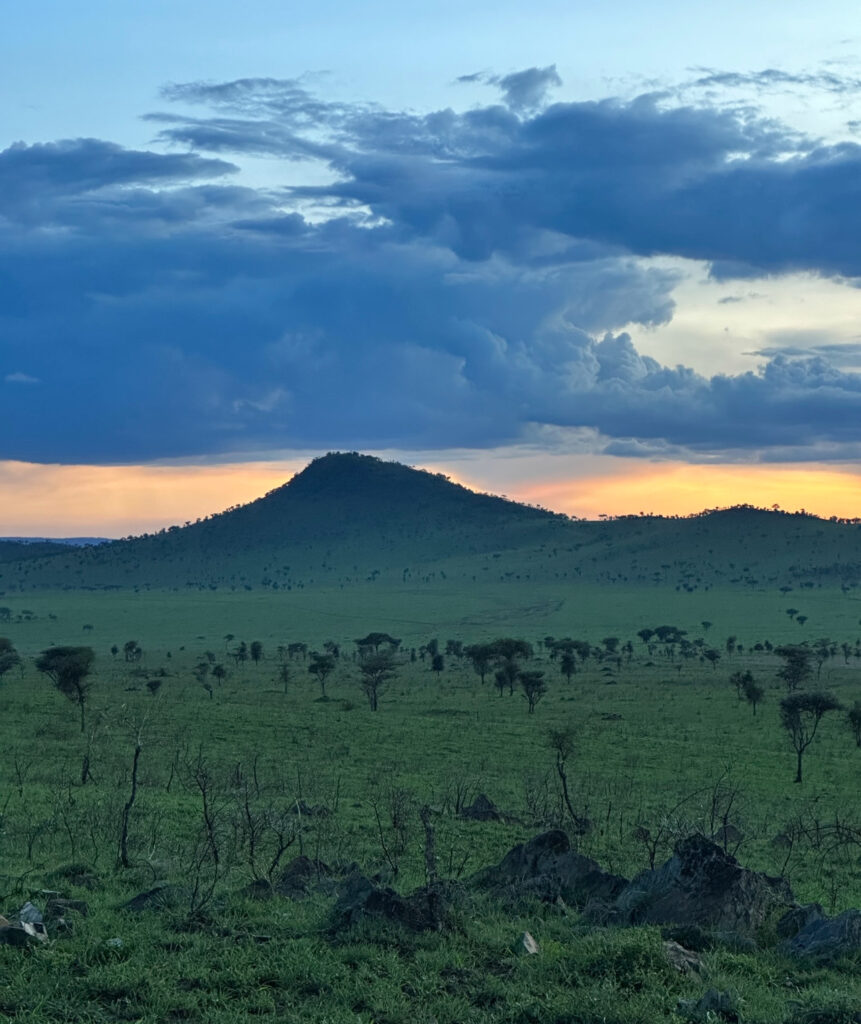
Tanzania Sunset in the Serengeti
What is one of your typical safaris like for your group? How do you encourage your groups to bond, listen and learn?
An HTAT adventure, I’ve discovered, holds a distinct significance for each individual. For some, it’s the excitement of encountering wildlife in its natural habitat, while for others, the allure lies in immersing themselves in vibrant local cultures and adventure. Many of my guests express, “I initially came for the wildlife, but I ended up falling in love with the people!”

Boating & Birdwatching on Lake Victoria
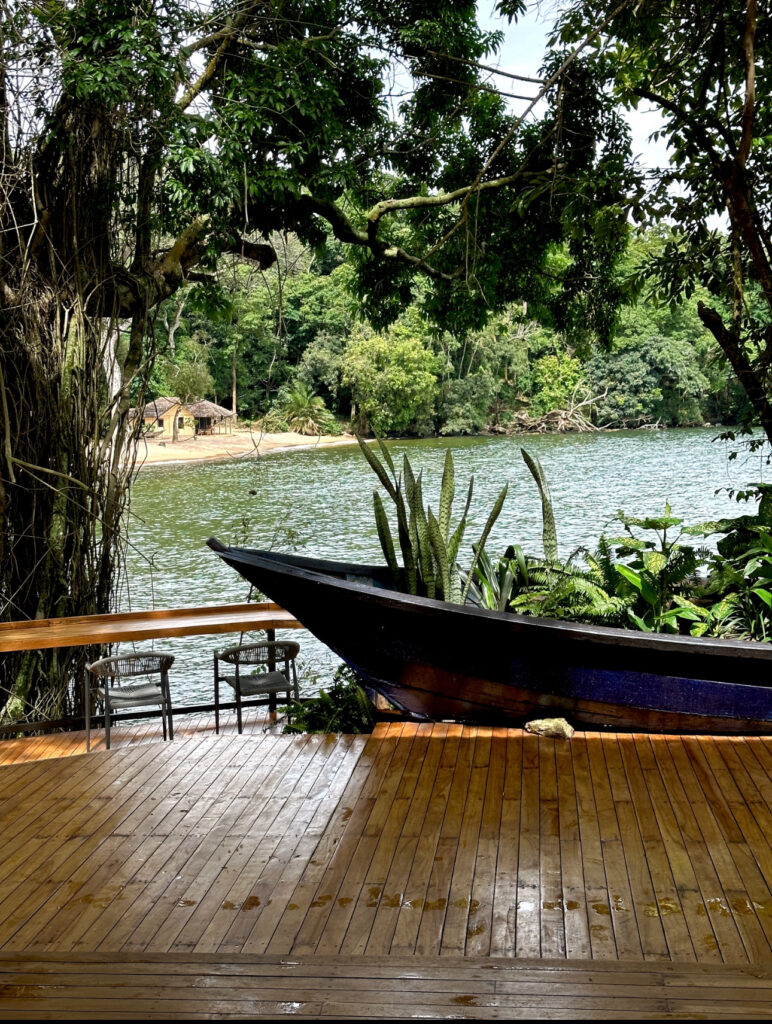
View of the Rubondo Island Campsite
Picture spending days in open-air Land Cruisers, eagerly searching for the elusive leopard or witnessing the powerful dynamics of a band of cheetah brothers on a hunt. Imagine the breathtaking moment when an elephant locks eyes with you, gently exploring the surroundings with her trunk. Alternatively, envision a mesmerizing scene of Samburu Warriors adorned in vibrant attire, dancing around a campfire under the starlit sky. As the adventure unfolds back at camp, stories and perspectives are shared over refreshing cocktails or during meals crafted from fresh vegetables sourced from the camp’s organic garden. These moments of reflection and camaraderie are integral to the safari experience.

Visiting a local art market, Zanzibar. Margaret Unetich
An HTAT adventure holds diverse meanings for different people – whether it’s an appreciation for wildlife, a fascination with local culture, or simply connecting with others, each experience is simultaneously shared and deeply personal, contributing to the magic of an HTAT Journey.
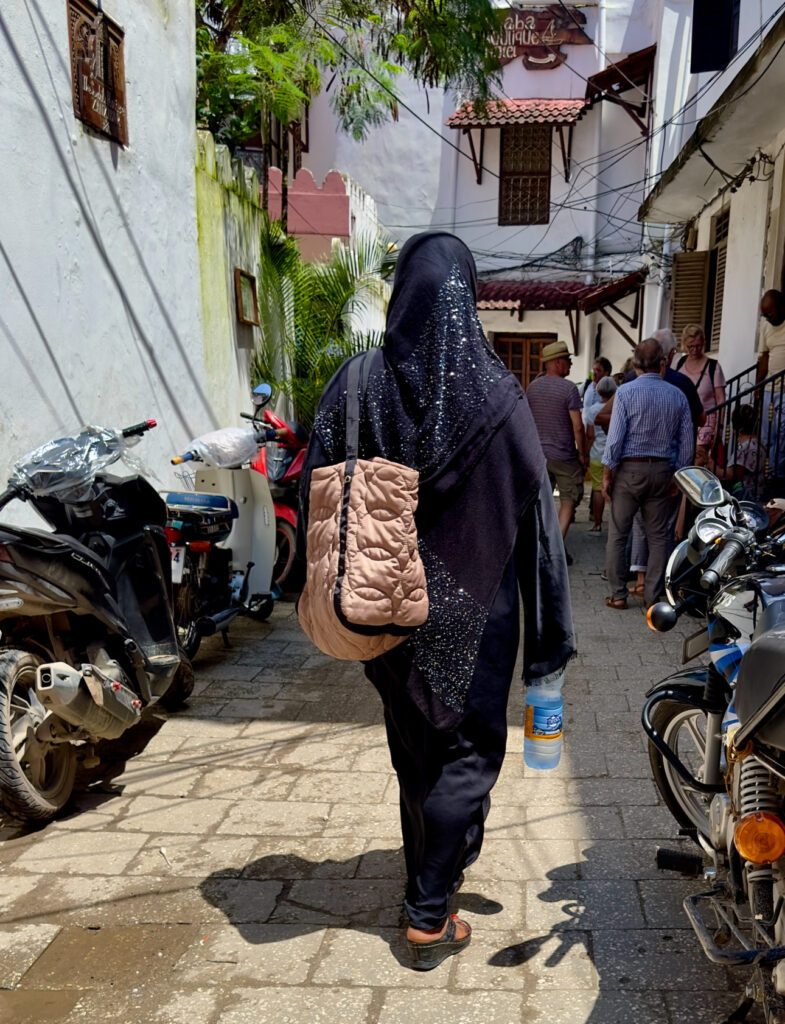
Local Woman walking through Stone Town
Have you always loved animals? Where did you grow up and did you have pets as a child?
I have always had a love of nature and animals. Nature has been a guiding force in my life since I was very young. When I was in elementary school, my family lived on a small farm in Texas. Our ‘playground’ was nature, complete with a pond full of tadpoles and fields of free-roaming goats, dogs, cats, a couple of donkeys and a few orphaned baby piglets and a special cow named “Timothy”. Talk about being immersed in nature– I know that’s where it all started for me, on the farm!
I, also, spent alot of time with my dad exploring nature and searching for all sorts of insects he needed to collect for his university entomology classes. The only scientific word that is forever ingrained in my vocabulary is ‘Lepidoptera’, better known as ‘Butterfly’. I have always adore butterflies, too, and it was super special when we visited Rubondo Island and the island was a flutter with the most beautiful butterflies… it was actually quite remarkable experiencing butterflies like this outside of the Peggy Notebaert’s Butterfly Pavilion. ha!
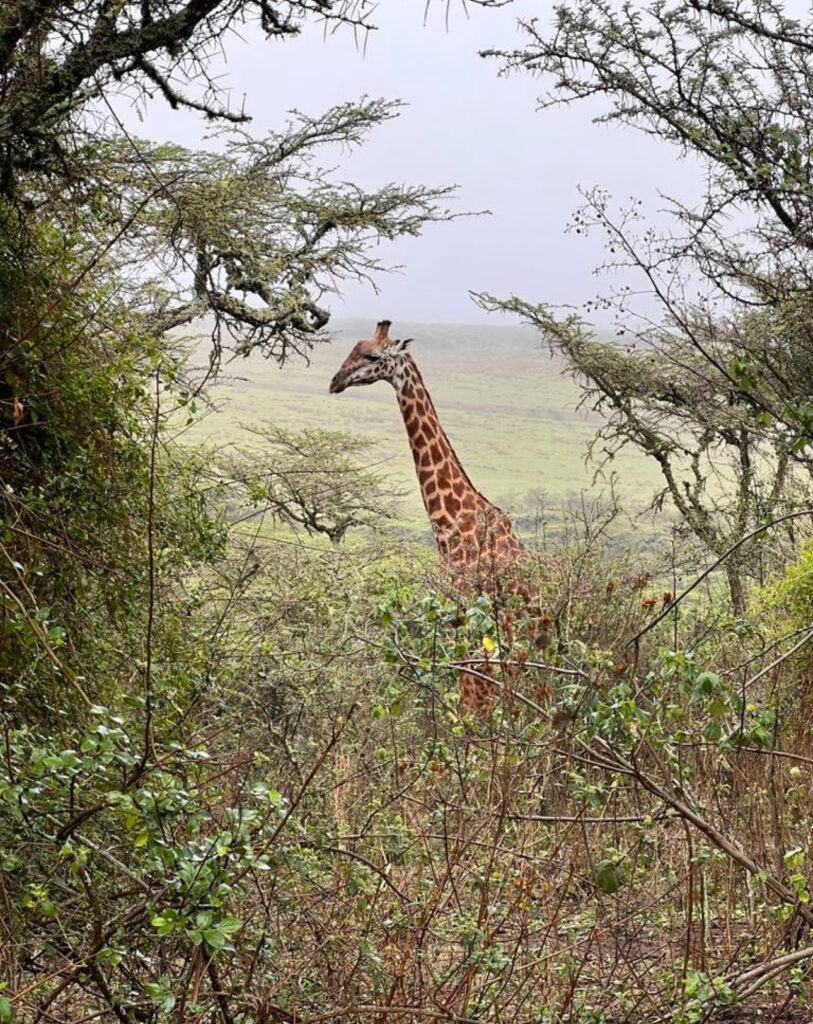
Giraffe on the Rim of the Ngorongoro Crater
An important part of your trip was the visit to the Crater where animals benefited from the involvement of the Lincoln Park Zoo. Tell us more about what you learned.
With each HTAT journey I host, I make it a point to collaborate with a conservation or non-profit organization in the destination country, dedicated to promoting the well-being of people, wildlife, and ecosystems. During our recent trip to Tanzania, HTAT Journeys proudly supported The Kope Lion Project. What makes this support particularly meaningful is the fact that the project is also endorsed by our local institution, the Lincoln Park Zoo in Chicago. Being able to link conservation efforts to my own community is truly special. It’s a wonderful feeling to see the direct involvement of the LPZ contributing to the success of missions aimed at preserving species in Africa!
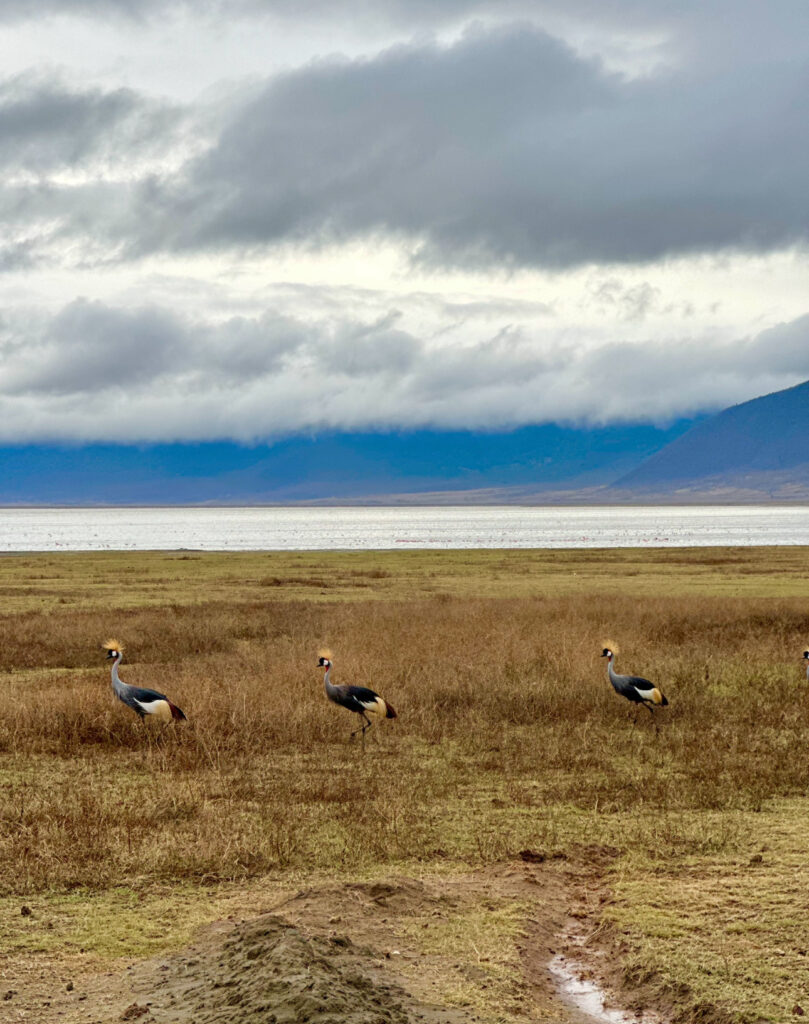
Crowned Cranes, Ngorongoro Crater
Over the past 25 years, lion populations across Africa have witnessed a 50% decline. Tanzania, having one-third of this lion population, holds particular significance for the long-term survival of these beautiful animals. The Ngorongoro Crater, in particular, faces a challenge to the genetic viability of its lion populations. The expanding Maasai communities make it increasingly difficult for male lions to traverse between the crater ecosystem and the broader Serengeti, posing a threat to their genetic health. The Kope Lion Project is dedicated to fostering lasting coexistence between people and lions in the Ngorongoro Crater. Collaborating with the local community, the project focuses on educating them about the vital role of lions in the ecosystem, proposing strategies to protect livestock from hungry lions, and reopening wildlife corridors to address the isolation of lion populations within the crater.
What can visitors learn about the animals you see on your trips?
Embarking on a safari adventure provides travelers with an invaluable opportunity to delve into the fascinating world of animals. Beyond the sheer thrill of encountering wildlife in their natural habitats, safari experiences offer a comprehensive education on various aspects of the animal kingdom. Expert guides share insights into animal behavior, shedding light on intricate social structures, daily routines, and distinctive behaviors exhibited by different species.
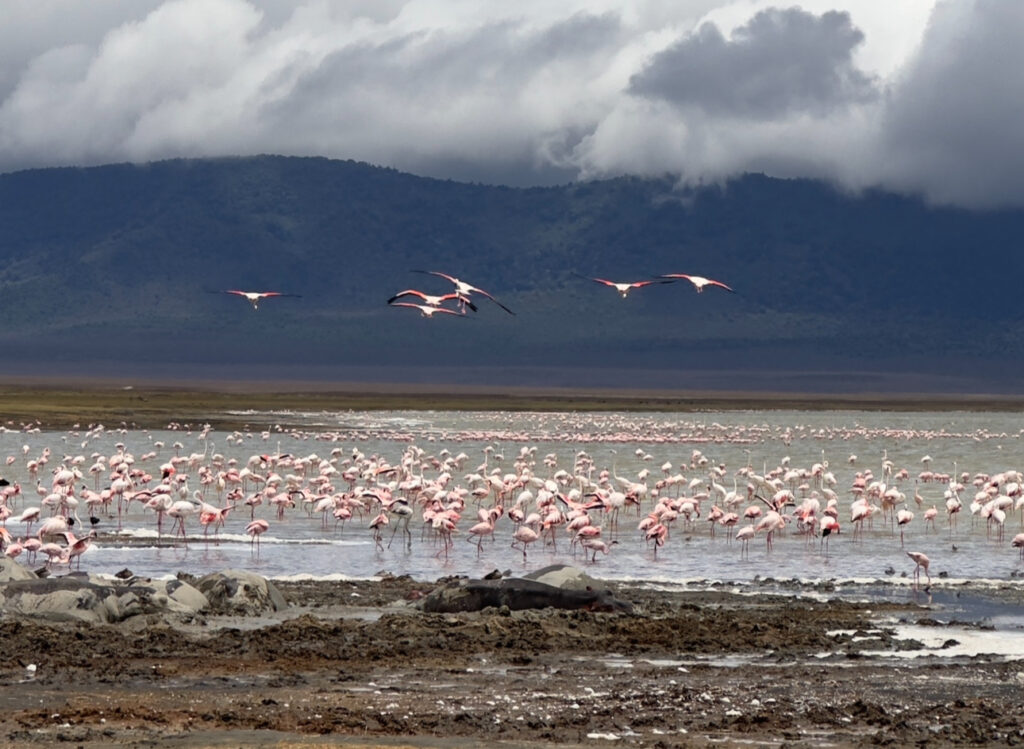
Pink Flamingos, Ngorongoro Crater
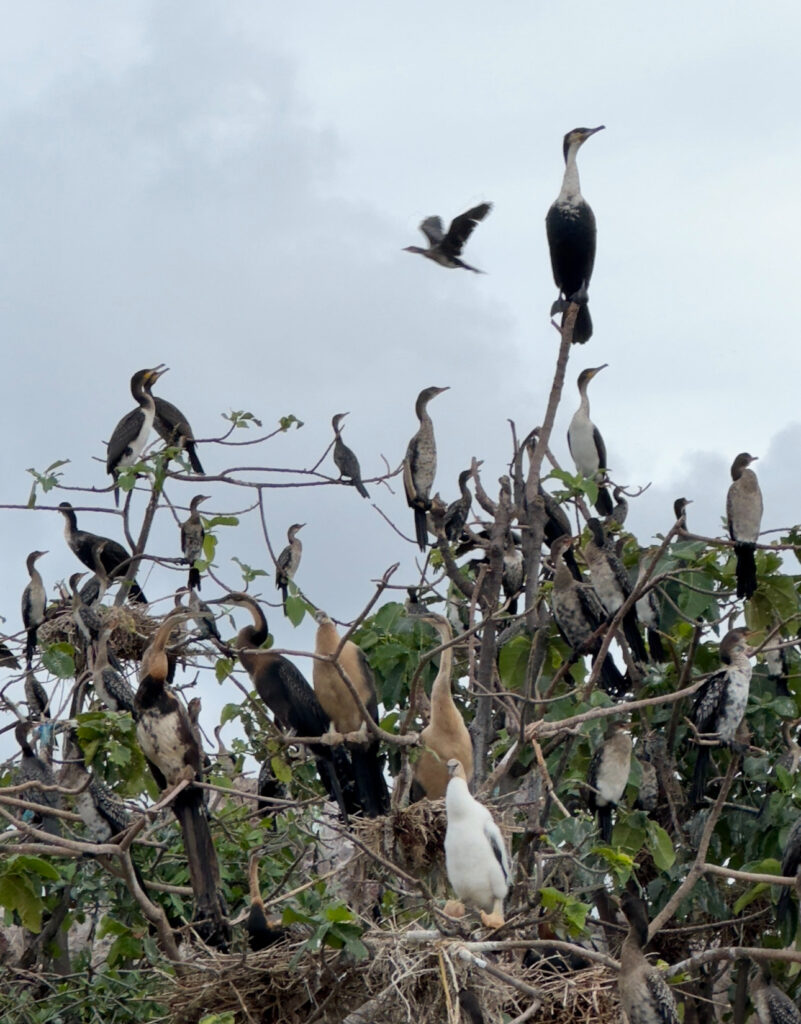
Birds Roosting on Lake Victoria
A key component of the safari journey involves species identification, where travelers learn to distinguish and appreciate the unique characteristics, behaviors, and markings of diverse animals. Guides also impart knowledge on the roles animals play within their ecosystems, emphasizing the interconnectedness that sustains the delicate balance of nature. This extends to the adaptations animals have developed for survival, including physical traits, hunting strategies, and defense mechanisms.

Leopard sleeping in a tree with baby zebra kill, Serengeti National Park
Moreover, safari experiences unfold lessons about the life cycles of animals, allowing travelers to witness the wonders of birth, death, nurturing behaviors, and challenges faced in old age. Guides often address conservation issues, discussing the threats faced by wildlife, such as habitat loss, poaching, and climate change. Through this lens, travelers gain a heightened awareness of the importance of wildlife conservation. Lastly, engaging with local guides and conservationists provides a window into ongoing efforts to protect wildlife, empowering travelers to contribute to the preservation of our natural world. In essence, a safari journey is not just a thrilling adventure but a transformative experience that deepens one’s connection to and appreciation for the intricate tapestry of life in the animal kingdom.

Cheetah Mom & Cub, Serengeti National Park
Why is it important—and frequently life-changing—making a safari trip with people who know about the animals and the land?
Embarking on an African safari is an invigorating experience that awakens your senses. Whether you’re walking, driving, or paddling through the bush, you share the air with every living organism. The journey is a sensory delight, brimming with captivating smells, exotic sounds, and encounters with unfamiliar creatures and awe-inspiring landscapes.

Warning sign on the shore of our camp. Rubondo Island. Lake Victoria
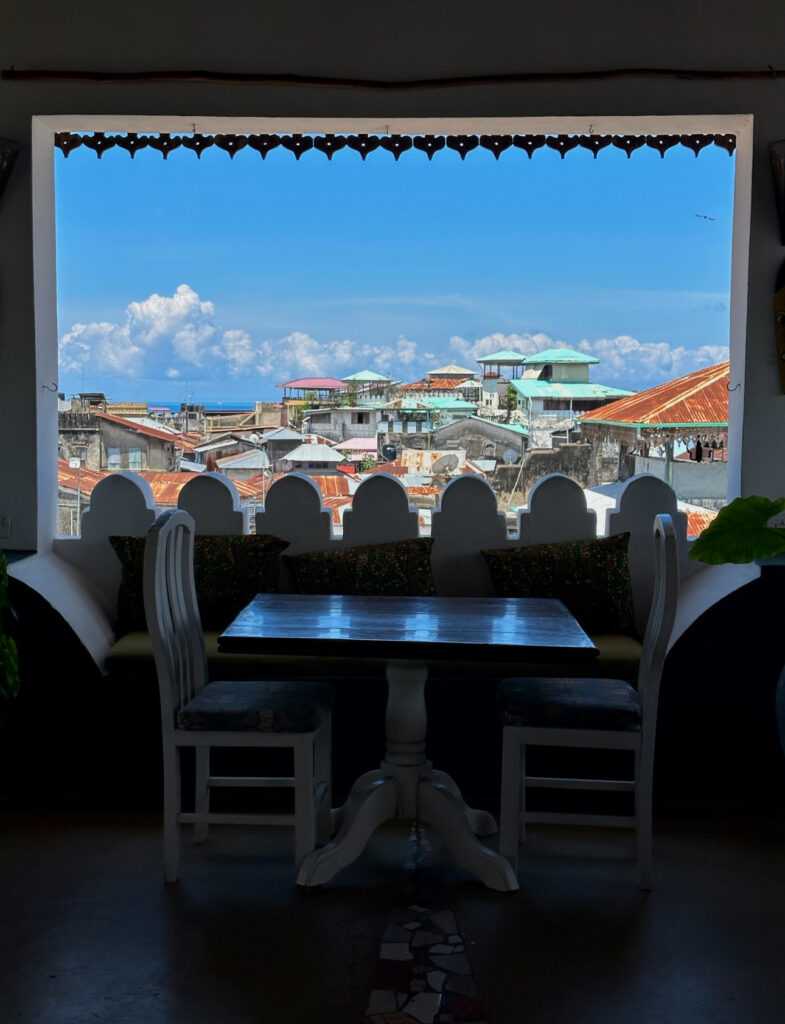
Overlooking Stone Town
While the classic safari conjures images of wildlife adventures, there’s an equally thrilling aspect—exploring local villages. Here, you have the opportunity to meet with elders, gaining insights into the ways they have coexisted with animals for centuries. Human-animal conflict is a pressing issue across Africa, and initiatives are underway to promote coexistence for the benefit of both wildlife and villagers. On an HTAT Journey, you also have the chance to connect with local scientists and conservationists spearheading innovative programs to address human-wildlife conflict.
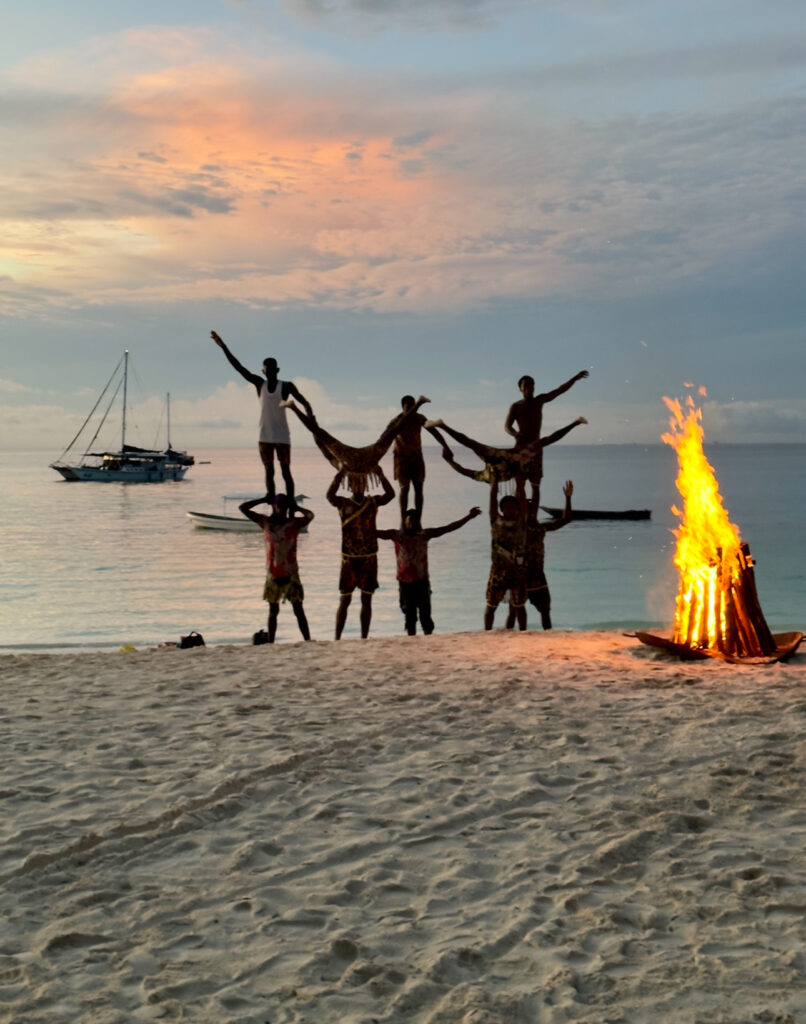
Beach Performers, Zanzibar
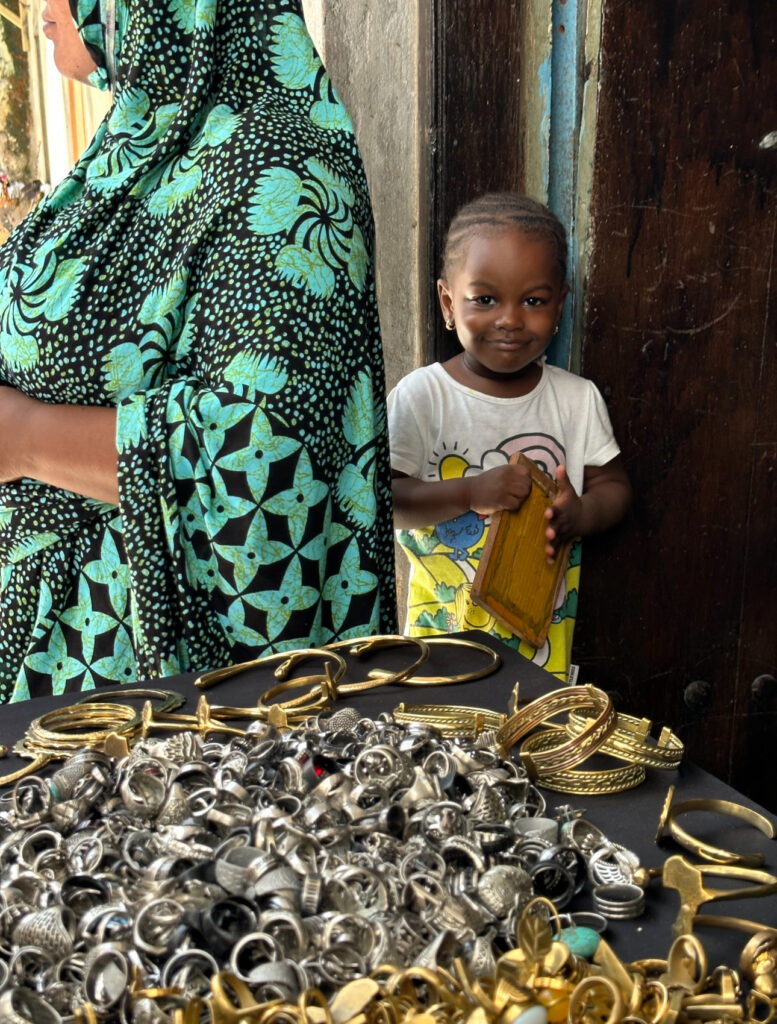
Sweet Smile in Stone Town
One notable example is Dr. Lucy King, a friend of mine, who devised a “beehive fence” to protect local farmers’ crops from crop raiding elephants. This inventive use of nature showcases the continent’s rapid pace of innovation in finding sustainable solutions to preserve the delicate balance between humans and wildlife.
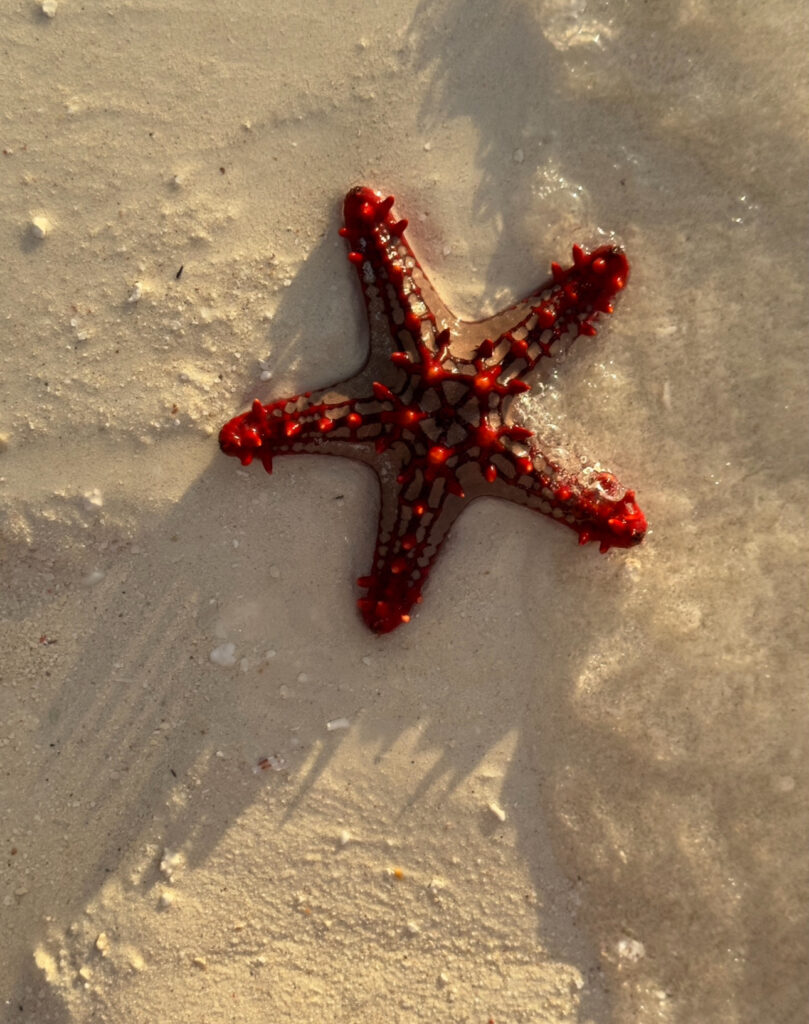
Starfish of Zanzibar
What are future trips, and what gives you the most pleasure about your trips?
When contemplating future travels and what I find most gratifying about these journeys, I’m drawn to the prospect of exploring new horizons. The African continent, spanning over three times the size of the United States, unfolds a diverse array of destinations, each boasting unique wildlife and enriching cultural encounters.
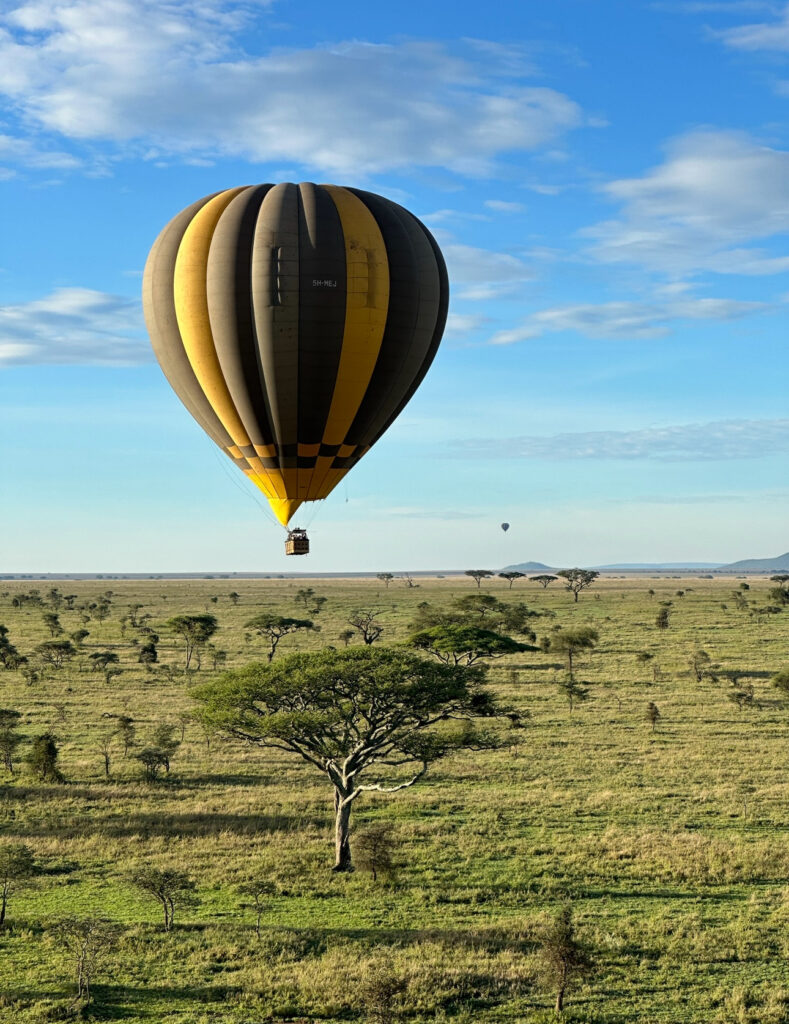
Hot Air Balloon Safari over the Serengeti

Shopping in Stone Town
Among the myriad destinations that spark my excitement, Namibia stands out. With its otherworldly landscapes, Namibia promises an enchanting and surreal desert experience. The country’s expansiveness is punctuated by distinctive geological wonders, from the endangered and highly adapted desert elephants to the wildlife-rich Etosha National Park, ensuring unforgettable safari adventures. The presence of the captivating Himba and San people further enhances the cultural significance of the Namibian journey. Lastly, the star-studded skies above Namibia’s dark-sky reserves will offer an unparalleled celestial spectacle, creating a haven for stargazers. It’s bound to be nothing short of spectacular.

Zuri Zanzibar Views
What can we do in our country, even if we can’t take a safari, to advocate for elephants and other animals?
Great question! Even if you can’t embark on a safari, there are several ways to advocate for elephants and other animals locally:
- 1. Raise Awareness: Share information about the challenges faced by elephants and other animals, such as habitat loss, poaching, and human-wildlife conflict. Use social media, blogs, or community events to spread awareness and educate others about the importance of conservation.
- 2. Support Conservation Organizations: Contribute to or volunteer with reputable conservation organizations dedicated to protecting wildlife. These organizations often work on initiatives related to habitat preservation, anti-poaching efforts, and community engagement. Your support can make a significant difference.
- 3. Educate Others: Take the initiative to educate your community, schools, or workplaces about the importance of coexistence with wildlife. Highlight the role animals play in maintaining ecosystem balance and the consequences of their decline for the environment and communities.
- 4. Advocate for Policy Changes: Get involved in local and national advocacy efforts to strengthen wildlife protection laws and regulations. Support policies that address issues like illegal wildlife trade, habitat conservation, and the well-being of animals in captivity.
- 5. Boycott Wildlife Products: Avoid purchasing products made from wildlife or sourced from activities that harm animals. Say no to items made from ivory, exotic animal skins, or products contributing to deforestation and habitat destruction.
- 6. Promote Responsible Tourism: Encourage and support ethical and responsible tourism practices. Choose travel operators, like Here Today, Africa Tomorrow (HTAT Journeys) and destinations that prioritize the well-being of animals, conservation, and sustainable practices.
- 7. Engage with Your Community: Foster a sense of community involvement by organizing or participating in events related to wildlife conservation. This could include tree planting, clean-up initiatives, or educational workshops.
- 8. Be Mindful of Consumption: Make environmentally conscious choices in your daily life. Reduce, reuse, and recycle to minimize your ecological footprint. Sustainable living practices contribute to the overall health of the planet and its inhabitants.
- 9. Support Elephant-Friendly Initiatives: Back initiatives that promote the protection of elephant habitats and the development of elephant-friendly practices. This could include supporting projects like elephant corridors and anti-poaching programs.
- 10. Engage in Citizen Science: Participate in citizen science projects that focus on monitoring and researching wildlife. Your contributions can provide valuable data for scientists and conservationists working to protect animals.
Advocating for elephants and wildlife is a collective effort that spans local and global actions. By taking small steps in your community and supporting broader conservation initiatives, you contribute to the well-being and preservation of these magnificent creatures.

Lion Sighting on the Serengeti

Suzette Bross Bulley, Photographer & HTAT Adventure Traveler
Instagram & Facebook: @heretodayafricatomorrow
Photos by Suzette Bross Bulley.



